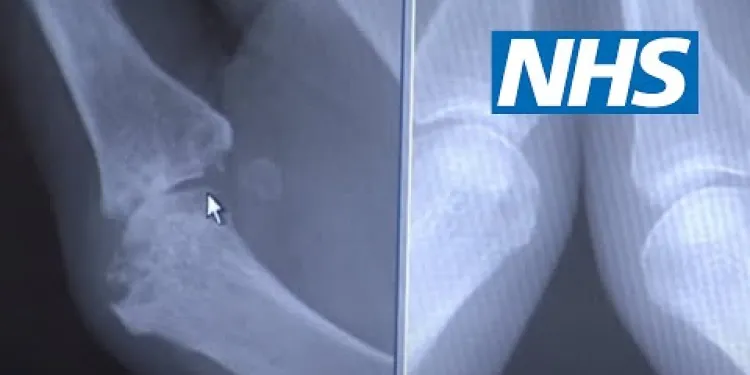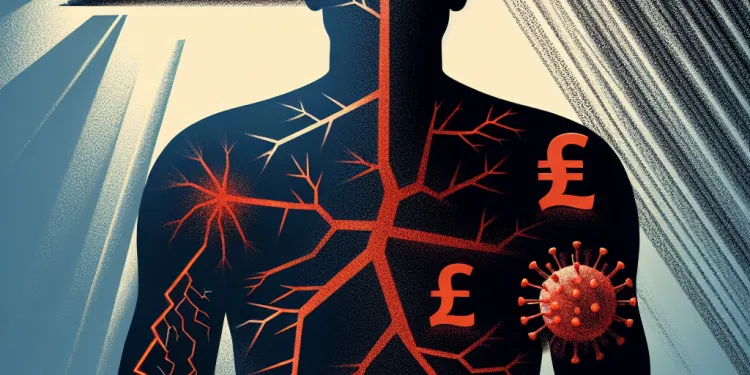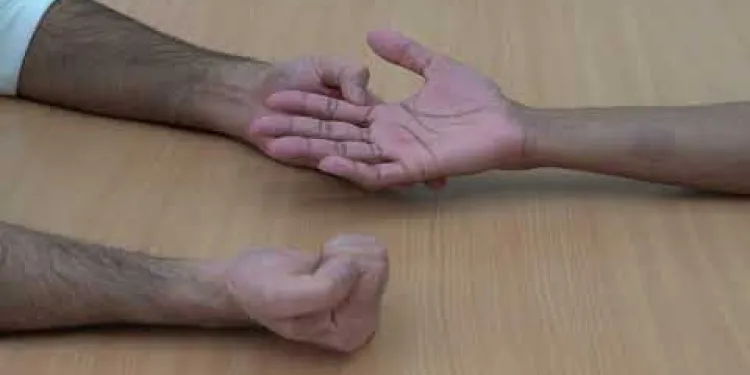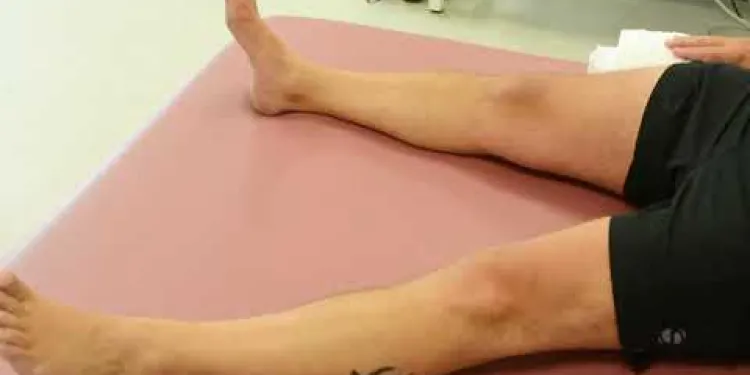Find Help
More Items From Ergsy search
-

Reactive arthritis
Relevance: 100%
-

Pilates for Arthritis | NHS
Relevance: 43%
-

Rheumatoid arthritis | NHS
Relevance: 42%
-

Can chiropractic care help with arthritis?
Relevance: 39%
-

What causes shingles?
Relevance: 18%
-

Can stress trigger shingles?
Relevance: 16%
-

What is shingles?
Relevance: 15%
-

What causes shingles?
Relevance: 14%
-

Can stress trigger shingles?
Relevance: 13%
-

What role do chronic conditions play in driving risks for seniors?
Relevance: 13%
-

Trigger Finger exam
Relevance: 13%
-

Osteoarthritis of the Hip
Relevance: 13%
-

Shoulder pain | NHS
Relevance: 12%
-

What triggers a cold sore outbreak?
Relevance: 12%
-

What is Ibuprofen?
Relevance: 12%
-

Are there any long-term effects of Chikungunya infection?
Relevance: 12%
-

Can shingles be prevented?
Relevance: 11%
-

What is Shingles?
Relevance: 11%
-

Can you get chickenpox more than once?
Relevance: 11%
-

What does water infrastructure maintenance involve?
Relevance: 11%
-

How is shingles diagnosed?
Relevance: 11%
-

Part One: Understanding Osteoarthritis- MSK Physiotherapy
Relevance: 11%
-

Joint School - Hip Exercises
Relevance: 10%
-

What causes cold sores?
Relevance: 10%
-

What are the symptoms of shingles?
Relevance: 10%
-

Can Ibuprofen be used to reduce inflammation?
Relevance: 10%
-

What are common symptoms of Lyme disease?
Relevance: 10%
-

What is Paracetamol?
Relevance: 10%
-

Total Knee Replacement
Relevance: 10%
-

Does Paracetamol reduce inflammation?
Relevance: 10%
-

Is shingles contagious?
Relevance: 10%
-

Can the shingles vaccine cause chickenpox?
Relevance: 10%
-

What is a common use of paracetamol?
Relevance: 10%
-

Can shingles be prevented?
Relevance: 9%
-

What are the potential benefits of CBD?
Relevance: 9%
-

What are the uses of cannabis extract?
Relevance: 9%
-

Osteoarthritis: Elaine's story | NHS
Relevance: 9%
-

What is psoriasis?
Relevance: 9%
-

Who is at risk of developing shingles?
Relevance: 9%
-

Who is at risk of developing shingles?
Relevance: 9%
Understanding Reactive Arthritis
Reactive arthritis is an inflammatory condition that affects the joints, often developing as a response to an infection in another part of the body. Commonly triggered by infections in the genitals, urinary tract, or intestines, this condition primarily impacts the knees, ankles, and feet, leading to pain and swelling. While reactive arthritis can affect anyone, it is most prevalent among young adults aged 20 to 40 years old.
Causes of Reactive Arthritis
The exact mechanism by which infections cause reactive arthritis is not fully understood, but it’s known that it typically follows a bacterial infection in areas such as the gastrointestinal or urogenital tracts. Common bacteria associated with reactive arthritis include Chlamydia trachomatis (a sexually transmitted infection) and foodborne bacteria such as Salmonella and Campylobacter. It's essential to note that not everyone who contracts these infections will develop reactive arthritis; genetic factors, such as the presence of the HLA-B27 gene, can increase susceptibility.
Symptoms and Diagnosis
Symptoms of reactive arthritis typically include joint pain and swelling, eye inflammation (conjunctivitis), and urinary issues. Some individuals may also experience skin rashes or mouth ulcers. Diagnosis often involves a combination of medical history evaluation, physical examination, and laboratory tests to identify infections or genetic markers like the HLA-B27 gene. Additionally, imaging tests such as X-rays may be used to assess joint damage.
Treatment Options
Treatment for reactive arthritis aims to manage symptoms and improve quality of life, as there is no cure for the condition itself. Non-steroidal anti-inflammatory drugs (NSAIDs) are commonly used to relieve pain and inflammation. In more severe cases, corticosteroids or disease-modifying antirheumatic drugs (DMARDs) may be prescribed. Physical therapy can also aid in maintaining joint function and mobility. Importantly, treating the initial infection that triggered the arthritis is crucial in preventing recurrence.
Living with Reactive Arthritis
Managing reactive arthritis involves a comprehensive approach that includes regular medical care and lifestyle adjustments. Keeping active with low-impact exercises, maintaining a healthy weight, and adhering to a balanced diet can support joint health. Joining support groups and seeking counseling may also help in coping with the chronic nature of the condition. Awareness and education are key to managing expectations and improving outcomes for those living with reactive arthritis in the United Kingdom.
Understanding Reactive Arthritis
Reactive arthritis is a condition that makes your joints swell and hurt. This happens because of an infection somewhere else in the body. It often starts after an infection in private areas, the pee-pee path, or tummy area. It mainly affects the knees, ankles, and feet. This condition mostly happens to young adults between 20 and 40 years old.
Causes of Reactive Arthritis
Doctors are not sure how infections lead to reactive arthritis. But we know it usually happens after a bacterial infection in the tummy or private areas. Some common germs that can trigger reactive arthritis are Chlamydia (a germ spread by touch) and germs from foods like Salmonella. Not everybody who gets these infections will get reactive arthritis. Some people have a special gene called HLA-B27 that makes them more likely to get it.
Symptoms and Diagnosis
If you have reactive arthritis, you might feel pain and swelling in your joints. Your eyes might also get red and sore, and you could have trouble peeing. Some people get skin rashes or mouth sores too. To find out if you have it, doctors will ask about your health and check your body. They might do blood tests to look for germs or the special gene HLA-B27. Sometimes, they take pictures of your joints with an X-ray to see if they are damaged.
Treatment Options
There is no cure for reactive arthritis, but treatment helps you feel better. Medicines like NSAIDs can help reduce pain and swelling. If the condition is serious, doctors might give other medicines called corticosteroids or DMARDs. Physical therapy can help keep your joints moving. It’s important to treat any infection that caused the arthritis, so it doesn’t come back.
Living with Reactive Arthritis
Taking care of reactive arthritis means seeing your doctor often and changing some daily habits. Activities like swimming can keep you moving without hurting your joints. Eating healthy and staying at a good weight are important. Joining support groups or talking to someone can help you deal with the condition. Knowing more about reactive arthritis helps you live better with it in the United Kingdom.
Frequently Asked Questions
What is reactive arthritis?
Reactive arthritis is a type of inflammatory arthritis that develops in response to an infection in another part of the body, often the intestines, genitals, or urinary tract.
What are the common symptoms of reactive arthritis?
Symptoms typically include joint pain and swelling, often in knees, ankles, and feet. Other symptoms may include inflammation of the eyes and urinary tract.
What causes reactive arthritis?
Reactive arthritis is usually triggered by an infection, particularly infections of the urinary tract, sexual organs, or digestive system. Common bacteria include Chlamydia, Salmonella, and Campylobacter.
How is reactive arthritis diagnosed?
Diagnosis often involves a combination of medical history, physical examination, blood tests for markers of inflammation, and possibly testing for infections and imaging studies.
Is reactive arthritis contagious?
No, reactive arthritis itself isn't contagious, although the infections that can trigger the condition may be.
What is the treatment for reactive arthritis?
Treatment typically involves anti-inflammatory medications, pain relief, physiotherapy, and treating the underlying infection if it is still present.
Can reactive arthritis become a chronic condition?
While symptoms of reactive arthritis usually resolve within months, in some cases they can persist or recur, leading to chronic arthritis.
Are there any lifestyle changes that can help manage reactive arthritis?
Maintaining a healthy weight, staying active, and doing joint-friendly exercises can help manage symptoms. A balanced diet may also support overall health.
Who is most at risk for developing reactive arthritis?
Individuals aged 20-40 are most commonly affected. It is more common in men than women, especially following sexually transmitted infections.
Is there a genetic component to reactive arthritis?
Yes, a specific genetic factor, HLA-B27, is associated with a higher risk of developing reactive arthritis.
Can reactive arthritis affect other parts of the body?
Yes, besides joints, it can affect the eyes, skin, and urinary tract. Some individuals may experience skin rashes or ulcers in the mouth or genital areas.
What should I do if I suspect I have reactive arthritis?
It's important to see a healthcare professional for an accurate diagnosis and appropriate treatment to manage symptoms and prevent complications.
Is there a cure for reactive arthritis?
There is no specific cure, but the condition can be well-managed with appropriate treatment, and many people recover completely or experience mild symptoms.
How long does reactive arthritis typically last?
Reactive arthritis may last for several months but can persist or recur over time in some cases. Management and treatment can help reduce the duration and severity of symptoms.
Can reactive arthritis lead to other health complications?
If not properly treated, reactive arthritis can lead to long-term joint damage and possible complications affecting other parts of the body, such as eye problems.
What is reactive arthritis?
Reactive arthritis is when your joints get sore and swollen after an infection somewhere in your body. It can make your knees, ankles, or feet hurt.
Here’s how you can understand better:
- It happens after you are sick, like having a stomach bug or a sore throat.
- Your body fights the infection, but your joints also start to hurt.
Make it easier to learn:
- Use pictures or videos about arthritis.
- Ask someone to explain it to you.
- Break information into small parts.
Remember, it’s okay to ask questions if you need help!
Reactive arthritis is a kind of joint pain that happens after an infection somewhere else in your body, like your tummy, private parts, or pee-area.
What signs show you might have reactive arthritis?
Reactive arthritis can hurt your joints after an infection. Here are signs to watch for:
- Pain or swelling in your knees, ankles, or feet
- Feeling stiff and hard to move in the morning
- Red or sore eyes
- Pain when you pee
- Rashes or sore spots on your skin
If you notice these signs, tell a grown-up or a doctor. They can help you feel better.
Using tools like picture books or asking someone to explain can help you understand more.
Signs of this problem usually include sore and swollen joints. This can happen in your knees, ankles, and feet. You might also have redness in your eyes and problems when you pee.
Why do people get reactive arthritis?
Reactive arthritis is when your joints hurt or swell because of an infection in another part of your body. Here is what can cause it:
- An infection, like a bad cold or a tummy bug.
- A problem with your immune system, which helps fight germs.
Tools that can help you understand better:
- Ask a doctor for advice.
- Look at pictures of joints and germs.
- Use apps that read text out loud.
Reactive arthritis happens when you have an infection. This can come from a pee (urinary) infection, a sexual organ infection, or a tummy (digestive) infection. Some germs that can cause this are Chlamydia, Salmonella, and Campylobacter.
If you have a hard time reading, you can try these tips:
- Ask someone to read it with you.
- Use audio books to listen instead.
- Read in a quiet place to help you focus.
- Read a little bit at a time and take breaks.
How do doctors find out if someone has reactive arthritis?
Doctors use different ways to find out if a person has reactive arthritis. Here are some things they might do:
- Ask questions about how the person is feeling and whether they have pain or swelling.
- Check the person's joints to see if they are red, warm, or sore.
- Look at medical history to see if the person had an infection before their joints started hurting.
- Do blood tests to find signs of inflammation or infection.
- Take pictures of the joints with X-rays to look for changes.
If you find it hard to understand what the doctor says, you can:
- Ask the doctor to use simple words.
- Bring a friend or family member to help you.
- Write down questions to ask the doctor before your visit.
- Use pictures or drawings to understand better.
Doctors find out what is wrong by doing a few things. They will:
- Ask about how you have been feeling and any health problems you have had before.
- Check your body to see how you are feeling now.
- Take a little bit of your blood and test it to see if your body is trying to fight something.
- Look for signs of infections and might take pictures inside your body, like with an X-ray.
Here are some things that can help you understand:
- Ask your doctor to explain things in simple words.
- Use pictures or drawings to help show what is happening.
- Repeat what the doctor says in your own words to make sure you understand.
- Ask someone you trust to help you remember what the doctor said.
Can you catch reactive arthritis from someone else?
No, you can't catch reactive arthritis from someone else. But the infections that can cause it might be spread to other people.
How can we help someone with reactive arthritis?
Treatment usually means taking medicine to reduce swelling and pain, going to physiotherapy to help your body, and treating any infections if they are still there.
Can reactive arthritis last a long time?
Reactive arthritis is when your joints hurt or swell. Sometimes, it goes away quickly. But other times, it can last a long time or keep coming back. This is called chronic.
Here are some ways to help:
- See a doctor. They know how to make your joints feel better.
- Take medicine if the doctor says it's okay.
- Do gentle exercises to keep your body strong.
- Use a warm towel or cold pack on sore spots.
- Talk to someone if you feel upset. They can help.
Sometimes, the signs of reactive arthritis go away in a few months. But, for some people, the signs can stay or come back, and this can cause long-lasting arthritis.
What can you do in your daily life to help with reactive arthritis?
There are things you can do every day to feel better if you have reactive arthritis. Here are some ideas:
- Keep Moving: Exercise can help your joints feel better. Try walking, stretching, or swimming.
- Eat Healthy Foods: Eating fruits, vegetables, and whole grains can be good for your body.
- Rest When You Need To: If you feel tired, it's okay to take a break.
- Use Warmth: A warm towel or heating pad can help sore joints feel better.
- Talk to a Doctor: Your doctor can give you advice and tell you what might help.
Keeping a healthy weight, moving your body, and doing exercises that are gentle on your joints can help you feel better. Eating a mix of good foods can also help your body stay strong.
Who can get reactive arthritis?
Some people have a higher chance of getting reactive arthritis. Here are some things that can make getting it more likely:
- Having certain infections, like food poisoning or a stomach bug.
- Having a certain gene that can make it easier to get.
- Being between 20 and 40 years old.
- It happens more in men than in women.
If you need help with reading, you can ask someone to read it with you or use a tool that reads the text out loud.
People who are 20 to 40 years old get this the most. Men get it more than women. It often happens after having a sickness you catch when you have sex.
Can people get reactive arthritis because of their genes?
Yes, there is a special gene called HLA-B27. If you have it, you might have a higher chance of getting reactive arthritis.
Can reactive arthritis hurt other parts of the body?
Yes, it can also affect other parts of the body. It can affect your eyes, skin, and where you pee. Some people might get skin rashes or sores in the mouth or private parts.
What to Do if You Think You Have Joint Pain from an Illness
If your joints hurt after you were sick, you might have something called reactive arthritis. Here are some steps you can take:
- See a Doctor: Ask a doctor to check your joints. They can help you feel better.
- Write Down Symptoms: Keep a list of what hurts and when. This helps the doctor understand.
- Rest: Try to rest your body. It helps reduce pain.
- Use Ice Packs: Put ice on sore joints for 15 minutes. This can help with swelling.
- Take Medicine: Ask your doctor if you can take medicine to ease the pain.
It’s important to get help early. These steps can support you.
It's important to visit a doctor to check what is wrong and get the right help so you can feel better and stay healthy.
Can reactive arthritis be fixed?
There is no special medicine to make it go away, but taking the right treatment can make it much better. Lots of people get better completely or only have mild signs of it.
How long does reactive arthritis usually last?
Reactive arthritis is a kind of pain in your joints. It can last for a few months. Sometimes it goes away but can come back. There are ways to help make the pain less and to feel better sooner.
Can reactive arthritis cause other health problems?
If you don't treat reactive arthritis, it can hurt your joints for a long time. It can also cause problems in other parts of your body, like your eyes.
Useful Links
- Ergsy carfully checks the information in the videos we provide here.
- Videos shown by Youtube after a video has completed, have NOT been reviewed by ERGSY.
- To view, click the arrow in centre of video.
- Most of the videos you find here will have subtitles and/or closed captions available.
- You may need to turn these on, and choose your preferred language.
- Go to the video you'd like to watch.
- If closed captions (CC) are available, settings will be visible on the bottom right of the video player.
- To turn on Captions, click settings .
- To turn off Captions, click settings again.
More Items From Ergsy search
-

Reactive arthritis
Relevance: 100%
-

Pilates for Arthritis | NHS
Relevance: 43%
-

Rheumatoid arthritis | NHS
Relevance: 42%
-

Can chiropractic care help with arthritis?
Relevance: 39%
-

What causes shingles?
Relevance: 18%
-

Can stress trigger shingles?
Relevance: 16%
-

What is shingles?
Relevance: 15%
-

What causes shingles?
Relevance: 14%
-

Can stress trigger shingles?
Relevance: 13%
-

What role do chronic conditions play in driving risks for seniors?
Relevance: 13%
-

Trigger Finger exam
Relevance: 13%
-

Osteoarthritis of the Hip
Relevance: 13%
-

Shoulder pain | NHS
Relevance: 12%
-

What triggers a cold sore outbreak?
Relevance: 12%
-

What is Ibuprofen?
Relevance: 12%
-

Are there any long-term effects of Chikungunya infection?
Relevance: 12%
-

Can shingles be prevented?
Relevance: 11%
-

What is Shingles?
Relevance: 11%
-

Can you get chickenpox more than once?
Relevance: 11%
-

What does water infrastructure maintenance involve?
Relevance: 11%
-

How is shingles diagnosed?
Relevance: 11%
-

Part One: Understanding Osteoarthritis- MSK Physiotherapy
Relevance: 11%
-

Joint School - Hip Exercises
Relevance: 10%
-

What causes cold sores?
Relevance: 10%
-

What are the symptoms of shingles?
Relevance: 10%
-

Can Ibuprofen be used to reduce inflammation?
Relevance: 10%
-

What are common symptoms of Lyme disease?
Relevance: 10%
-

What is Paracetamol?
Relevance: 10%
-

Total Knee Replacement
Relevance: 10%
-

Does Paracetamol reduce inflammation?
Relevance: 10%
-

Is shingles contagious?
Relevance: 10%
-

Can the shingles vaccine cause chickenpox?
Relevance: 10%
-

What is a common use of paracetamol?
Relevance: 10%
-

Can shingles be prevented?
Relevance: 9%
-

What are the potential benefits of CBD?
Relevance: 9%
-

What are the uses of cannabis extract?
Relevance: 9%
-

Osteoarthritis: Elaine's story | NHS
Relevance: 9%
-

What is psoriasis?
Relevance: 9%
-

Who is at risk of developing shingles?
Relevance: 9%
-

Who is at risk of developing shingles?
Relevance: 9%


